-
37. Building Blocks
This chapter explains the concept of building blocks and contains a fictional example illustrating building blocks in architecture.
37.1 Overview
This section is intended to explain and illustrate the concept of building blocks in architecture.
Following this overview, there are three main parts:
- Introduction to Building Blocks (see 37.2 Introduction to Building Blocks), discusses the general concepts of building blocks, and explains the differences between Architecture Building Blocks (ABBs) and Solution Building Blocks (SBBs).
- Building Blocks and the ADM (see 37.3 Building Blocks and the ADM), summarizes the stages at which building block design and specification occurs within the TOGAF Architecture Development Method (ADM).
- Building Blocks Example (see 37.4 Building Blocks Example), comprises a series of separate subsections that together provide a detailed worked example showing how building block context is captured, how building blocks are identified, and how building blocks are defined when executing the major steps of the ADM.
37.2 Introduction to Building Blocks
This section is an introduction to the concept of building blocks.
37.2.1 Overview
This section describes the characteristics of building blocks. The use of building blocks in the ADM is described separately in 37.3 Building Blocks and the ADM .
37.2.2 Generic Characteristics
Building blocks have generic characteristics as follows:
- A building block is a package of functionality defined to meet the business needs across an organization.
- A building block has a type that corresponds to the TOGAF content metamodel (such as actor, business service, application, or data entity)
- A building block has a defined boundary and is generally recognizable as "a thing" by domain experts.
- A building block may interoperate with other, inter-dependent, building blocks.
- A good building block has the following characteristics:
- It considers implementation and usage, and evolves to exploit technology and standards.
- It may be assembled from other building blocks.
- It may be a subassembly of other building blocks.
- Ideally a building block is re-usable and replaceable, and well specified.
A building block's boundary and specification should be loosely coupled to its implementation; i.e., it should be possible to realize a building block in several different ways without impacting the boundary or specification of the building block. The way in which assets and capabilities are assembled into building blocks will vary widely between individual architectures. Every organization must decide for itself what arrangement of building blocks works best for it. A good choice of building blocks can lead to improvements in legacy system integration, interoperability, and flexibility in the creation of new systems and applications.
Systems are built up from collections of building blocks, so most building blocks have to interoperate with other building blocks. Wherever that is true, it is important that the interfaces to a building block are published and reasonably stable.
Building blocks can be defined at various levels of detail, depending on what stage of architecture development has been reached.
For instance, at an early stage, a building block can simply consist of a name or an outline description. Later on, a building block may be decomposed into multiple supporting building blocks and may be accompanied by a full specification.
The level of detail to which a building block should be specified is dependent on the objectives of the architecture and, in some cases, less detail may be of greater value (for example, when presenting the capabilities of an enterprise, a single clear and concise picture has more value than a dense 100-page specification).
The OMG have developed a standard for Re-usable Asset Specification (RAS),1 which provides a good example of how building blocks can be formally described and managed.
37.2.3 Architecture Building Blocks
Architecture Building Blocks (ABBs) relate to the Architecture Continuum (see Part V, 39.4.1 Architecture Continuum), and are defined or selected as a result of the application of the ADM.
37.2.3.1 Characteristics
ABBs:
- Capture architecture requirements; e.g., business, data, application, and technology requirements
- Direct and guide the development of SBBs
37.2.3.2 Specification Content
ABB specifications include the following as a minimum:
- Fundamental functionality and attributes: semantic, unambiguous, including security capability and manageability
- Interfaces: chosen set, supplied
- Interoperability and relationship with other building blocks
- Dependent building blocks with required functionality and named user interfaces
- Map to business/organizational entities and policies
37.2.4 Solution Building Blocks
Solution Building Blocks (SBBs) relate to the Solutions Continuum (see Part V, 39.4.2 Solutions Continuum), and may be either procured or developed.
37.2.4.1 Characteristics
SBBs:
- Define what products and components will implement the functionality
- Define the implementation
- Fulfil business requirements
- Are product or vendor-aware
37.2.4.2 Specification Content
SBB specifications include the following as a minimum:
- Specific functionality and attributes
- Interfaces; the implemented set
- Required SBBs used with required functionality and names of the interfaces used
- Mapping from the SBBs to the IT topology and operational policies
- Specifications of attributes shared across the environment (not to be confused with functionality) such as security, manageability, localizability, scalability
- Performance, configurability
- Design drivers and constraints, including the physical architecture
- Relationships between SBBs and ABBs
37.3 Building Blocks and the ADM
37.3.1 Basic Principles
This section focuses on the use of building blocks in the ADM. General considerations and characteristics of building blocks are described in 37.2 Introduction to Building Blocks .
37.3.1.1 Building Blocks in Architecture Design
An architecture is a set of building blocks depicted in an architectural model, and a specification of how those building blocks are connected to meet the overall requirements of the business.
The various building blocks in an architecture specify the scope and approach that will be used to address a specific business problem.
There are some general principles underlying the use of building blocks in the design of specific architectures:
- An architecture need only contain building blocks that are relevant to the business problem that the architecture is attempting to address.
- Building blocks may have complex relationships to one another. One building block may support multiple building blocks or may partially support a single building block (for example, the business service of "complaint handling" would be supported by many data entities and possibly multiple application components).
- Building blocks should conform to standards relevant to their type, the principles of the enterprise, and the standards of the enterprise.
37.3.1.2 Building Block Design
The process of identifying building blocks includes looking for collections of capabilities or assets that interact with one another and then drawing them together or making them different:
- Consider three classes of building blocks:
- Re-usable building blocks, such as legacy items
- Building blocks to be the subject of development, such as new applications
- Building blocks to be the subject of purchase; i.e., Commercial Off-The-Shelf (COTS) applications
- Use the desired level of integration to bind or combine functions into building blocks. For instance, legacy elements could be treated as large building blocks to avoid breaking them apart.
In the early stages and during views of the highest-level enterprise, the building blocks are often kept at a broad integration definition. It is during these exercises that the services definitions can often be best viewed. As implementation considerations are addressed, more detailed views of building blocks can often be used to address implementation decisions, focus on the critical strategic decisions, or aid in assessing the value and future impact of commonality and re-usability.
37.3.2 Building Block Specification Process in the ADM
The process of building block definition takes place gradually as the ADM is followed, mainly in Phases A, B, C, and D. It is an iterative process because as definition proceeds, detailed information about the functionality required, the constraints imposed on the architecture, and the availability of products may affect the choice and the content of building blocks.
The key parts of the ADM at which building blocks are designed and specified are summarized below.
The major work in these steps consists of identifying the ABBs required to meet the business goals and objectives. The selected set of ABBs is then refined in an iterative process to arrive at a set of SBBs which can either be bought off-the-shelf or custom developed.
The specification of building blocks using the ADM is an evolutionary and iterative process. The key phases and steps of the ADM at which building blocks are evolved and specified are summarized below, and illustrated in Key ADM Phases/Steps at which Building Blocks are Evolved/Specified .
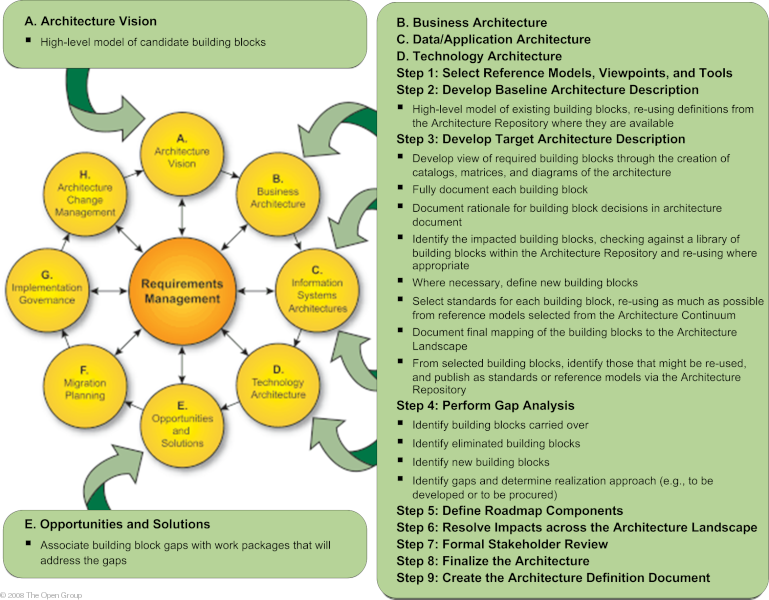
Figure 37-1: Key ADM Phases/Steps at which Building Blocks are Evolved/Specified 37.4 Building Blocks Example
37.4.1 Introduction
This section provides a detailed worked example showing how building block context is captured, how building blocks are identified, and how building blocks are defined when executing the major steps of the ADM.
37.4.2 Structure
The levels of modeling within the ADM are explained in 37.3 Building Blocks and the ADM , and the example follows the structure of modeling explained there:
- Background to the Example (see 37.4.3 Background to the Example)
- Identifying Building Block Scope (see 37.4.4 Identifying Building Block Scope)
- Identifying Building Block Requirements and Constraints (see 37.4.5 Identifying Building Block Requirements and Constraints)
- Architecture Modeling (see 37.4.6 Architecture Modeling)
- Opportunity Identification (see 37.4.7 Opportunity Identification)
- Building Block Re-Use Level (see 37.4.8 Building Block Re-Use Level)
37.4.3 Background to the Example
In this example, a fictional company called XYZ Manufacturing has decided to improve the efficiency of its mobile sales force by replacing paper-based configuration and ordering systems with an IT solution.
The XYZ team have already done the preliminary stages of describing their existing system and reviewing it from a number of different viewpoints, and as a result have established a number of goals and objectives for the new system.
The principal goal is to give the sales force in the field direct access to the sales process back at base. This will allow sales staff to create and verify the product configuration, to check the price and availability of the goods, and to place the order while actually with the customer.
Other stages of the sales process - such as initiating the sale and determining the customer requirements - are considered to be outside the scope of this example.
37.4.4 Identifying Building Block Scope
As a preliminary to Phase B (Business Architecture), it is necessary to define the scope of activity, including what is in scope, what is out of scope, what the limits are, and what the financial envelope is. Within this step fall defining the business process, recording the assumptions made, and developing any new requirements. The information collected is used to gauge the baseline system and to determine the return on investment of potential changes. Use-cases are a useful tool in this step to describe the business processes and they can be used to do a sanity check against the resulting architecture.
In the example in this section, the business goals driving improvements in the sales process were:
- Improve the quality of the sales process
- Reduce the number of errors in the sales process
- Speed up the sales process
In this example, financial and time constraints and business return have not been dealt with in detail, but normally these constraints would be used to guide the process along the entire way to avoid over-engineering or "creeping elegance". The architect should especially look at these constraints whenever iterating between steps. Also not shown in this example are the use-case scenarios. However, the process described below does include participants, or actors, of the use-case with brief descriptions of their roles in Use-Case Table of Sales Process .
For the sake of brevity in this example, it is assumed that the scope of the architectural work would not extend beyond the sales arena, and that the proposed solutions fit within the financial and time constraints imposed by XYZ.
The assumptions made by the XYZ architect during Phase B are:
- To support the mission of the business, it is desired to have the sales person and the customer meet and interact face-to-face at the customer location.
- The model for such a customer visit should be two persons interacting using a shared PC.
- The sales person needs to be able to close the deal on-site, and then synchronize with information held at the sales base.
- There is a clearly-defined product set subject of the sales process; e.g., there is a car to buy.
The relevant business process in scope of this example in the XYZ company is the customer-facing portion of the sales process and the supporting systems. This sales process consists of the following steps:
- Initiate the sales process with the customer:
- Sales Person
- Customer
- Discuss the customer requirements:
- Customer
- Sales Person
- Work with the customer to create a product configuration:
- Sales Person
- Sales Person's Laptop
- Sales Person's Local (LIPR) and Central (CIPR) Information Process Resources
- Product Configurator
- Customer
- Verify that the desired configuration can be delivered:
- Sales Person
- Sales Person's Laptop
- Inventory Control System
- Scheduling System
- Customer Accepts or Rejects
- Determine the price of the requested configuration:
- Sales Person
- Sales Person's Laptop
- Pricing System
- Confirm the desire to purchase with the customer:
- Sales Person
- Customer
- Place an order:
- Sales Person
- Sales Person's Laptop with Printer (for Fax)
- Order System
- Customer
- Customer acceptance:
- Sales Person
- Customer
The following use-case table represents participants (sometimes referred to as "actors" in use-cases) in the rows, steps of the business process in the columns, and roles in the cells. Note that this is an example, and it is not intended to be accurate, but rather demonstrative. Constructing a use-case table is a comparatively small effort that will ultimately enhance the speed and quality of the resulting architecture.
The meanings of the various acronyms used in the table, and in subsequent figures, are listed below:
- CIPR
- Central Information Processing Resource
- ICSys
- Inventory Control System
- LIPR
- Local Information Processing Resource
- OrdSys
- Order Processing/Information System
- ProdConfig
- Product Configurator System
- ProdSys
- Product Information System
- SchSys
- Scheduling System
- $Sys
- Pricing Information System
2:Discuss
3:Create
4:Verify
1:Initiate
Reqmts
Config
Config
5:Price
6:Confirm
7:Order
8:Accept
Sales Person
Greets customer
Listens
Represents options with different capabilities
Accesses ICSys and SchSys and presents availability to customer
Accesses price system and presents price to customer
Presents offer
Accesses order system
Presents contract
Customer
Accepts sales person
Discusses problems/ desires
Listens and decides on options based on capabilities
Accepts or rejects
Accepts or rejects
Signs or rejects
Sales Person's Laptop
Interacts with configurator
Interacts with ICSys and SchSys
Interacts with price system
Interacts with order system and receives fax response
Sales Person's CIPR
Provides central information processing
Sales Person's LIPR
Provides local information processing
ProdConfig
Presents configs to sales person per needs, providing capabilities
ICSys
Provides availability
SchSys
Provides delivery date
$Sys
Provides price information on a config
OrderSys
Processes order and sends fax of order to sales person's laptop
Table: Use-Case Table of Sales Process Steps 1, 2, 6, and 8 are not within scope of the architecture work since the only participants involved are humans. The other steps are considered within scope since there are computing components involved in supporting the sales process. Note the computing participants are the first set of identified candidate building blocks - Business Process-Driven List.
During Phase A, the business goals were developed into more detailed business requirements, and these were:
- To improve on the current turnaround time of 48 hours for order processing
- To reduce the number of errors in orders by a factor of three
A very simplified view of the candidate building blocks required to support the business process with an idea of location is provided below. This model was built from elements of the above table.
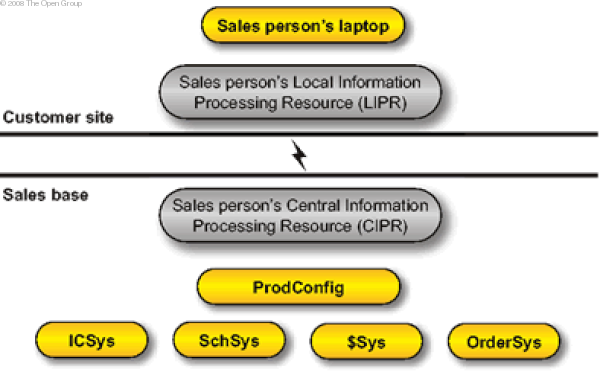
Figure 37-2: Candidate Building Blocks: Business Process-Driven List 37.4.5 Identifying Building Block Requirements and Constraints
The objective of the first step in Phases B, C, and D of the ADM is to build a high-level description of the characteristics of the current system, re-usable building blocks from the current system, the technical functionality needed to address the business problem, and to identify additional constraints. This is necessary as the description documents the starting point for architectural development and lists the interoperability issues that the final architecture will have to take into account. Potential re-usable building blocks may be contained in the existing environment. They are identified in this step.
The best approach is to describe the system in terms already used within the organization. A reliable picture can be built up of the business functions served and the platforms which support those functions. Gather and analyze only that information that allows informed decisions to be made regarding the Target Architecture.
The inputs to this step are:
- Descriptions of the current system
- Information on the Baseline Architecture
- Model of candidate building blocks
The essential outputs from this activity are:
- A clear description of the current system and its functions
- A statement of the constraints imposed by the internal organization
- A statement of the constraints imposed by the business or external environments
- Architecture principles embodied in the current system
- Assumptions of required technical functionality
- Candidate building blocks - Baseline-Driven List
- Model of candidate building blocks (see Candidate Building Blocks from the Baseline-Driven List )
The key input to this step is the Baseline Architecture. In this example, a depiction of a Baseline Architecture is shown in XYZ Baseline Architecture . Additionally depicted in this architecture model are pointers to existing problems with the Baseline Architecture. These pointers are used by the architect to determine where existing components are failing, and where existing systems can be re-used.
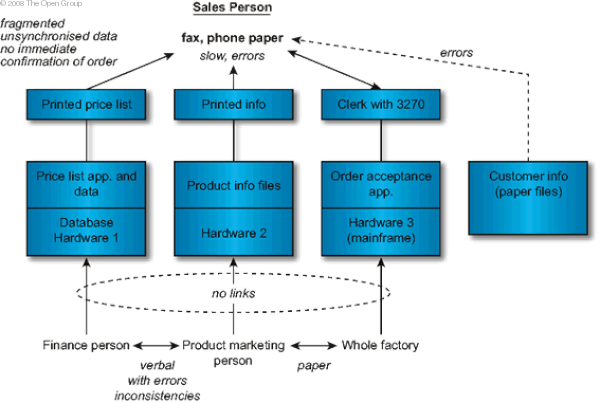
Figure 37-3: XYZ Baseline Architecture It is necessary to record strategic decisions about the existing architectural and technological issues such as:
- The Baseline Architecture is founded on the mainframe.
- Databases are tied to application logic.
- Security is embedded in the application.
The next step consists of restating the business process, considering what functionality will be required, and deciding what constraints apply. Decisions at this stage are not definitive, but act as input for the following steps and iterations.
The architects of XYZ identified the following pieces of technical functionality as necessary to support the business processes. This list was produced using standard brainstorming techniques.
37.4.5.1 Assumptions of Required Technical Functionality
- Access to central functions
- Application support for simultaneous access by multiple sales persons through multiple connections
- Execution of local functions at the point-of-sale
- Access to product information
- Entering and checking the required product configuration
- Access to customer information
- Access to price information
- Order entry
- Order acceptance
- Delivery of confirmation of order to the customer
- The process must be secured
Also in the brainstorming session, some assumptions were made and therefore must be documented as they should be used throughout the process:
- Initiation of the sales process and determination/agreement of the customer requirements were outside the scope of the current work.
- Functionality could be distributed between the point-of-sale and a central base.
- Closure of the order should take place at the central location.
- The price list and product information could be made available electronically.
- Access could be provided to the acceptance and confirmation of order systems.
- The ordering, product information, and price information systems could be linked together.
One constraint was put on the development because XYZ already had systems in place to support the sales process:
- Existing systems should be used to support product information, order placement, and customer information.

Figure 37-4: Candidate Building Blocks Augmented with Technical Functionality The above model is scrutinized and questions are asked about the functionality that could be provided by the existing system. Candidate Building Blocks from the Baseline-Driven List depicts the set of candidate building blocks from the existing system, resulting from this question.
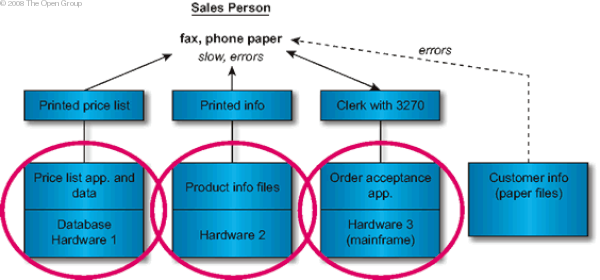
Figure 37-5: Candidate Building Blocks from the Baseline-Driven List 37.4.6 Architecture Modeling
In Phases B, C, and D a number of different architecture views are considered and used to build up a model of the new architecture. At XYZ, the architectural model level was developed in the following steps:
- A Baseline Description in the TOGAF format
- Consider different architecture views
- Create an architectural model of building blocks
- Select the services portfolio required per building block
- Confirm that the business goals and objectives are met
- Determine criteria for specification selection
- Complete the Architecture Definition
- Conduct a gap analysis
In executing Step 1, the Baseline Architecture was assessed:
- To describe the baseline features principles of the Baseline Architecture
- To describe the Baseline Architecture in TOGAF terms
- To identify new requirements, inhibitors, and opportunities
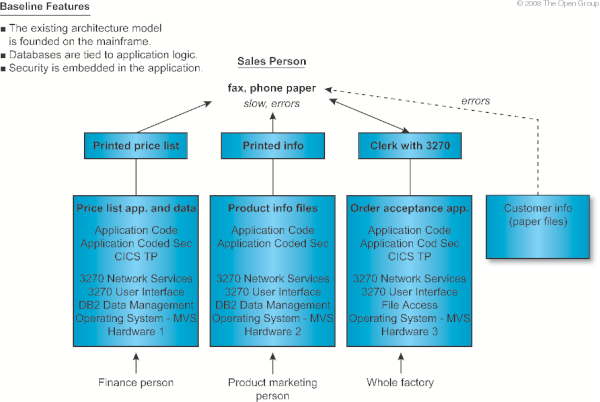
Figure 37-6: Baseline Architecture in TOGAF Terms Notice how in Baseline Architecture in TOGAF Terms and Target Architecture of Functions the legacy systems supporting the price list, product information, and order acceptance applications are easy to handle as monolithic building blocks. Augmented Target Architecture of Functions , Representation of XYZ SalesApp System , and Services Map show they can be connected to new building blocks using adapters.
In Step 2, the function view was examined based upon what the system was intended to do, and how it should behave. The function view is depicted in Target Architecture of Functions . Note that the inventory control and scheduling system are not covered.
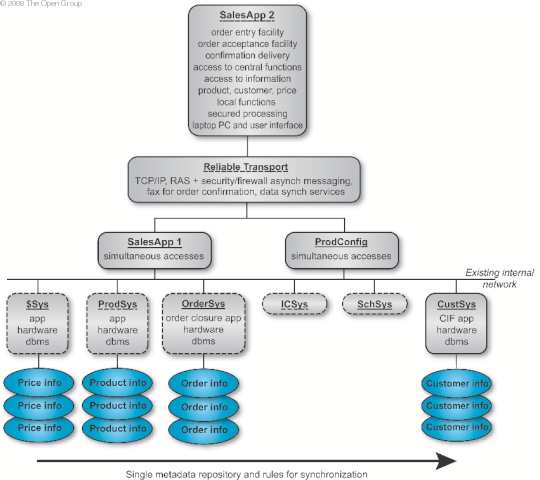
Figure 37-7: Target Architecture of Functions In executing Step 2, a view of the Target Architecture was created by processing the technical functionality that must be provided by:
- Identifying obvious additions
- Identifying what would be carried forward from the old system
- Determining the return on investment for various options, allowing them to be ranked
- Assessing the risk of the various changes
- Checking the coverage of the technical functionality
- Adding technical functionality required for completeness, checking against the TOGAF Technical Reference Model (TRM)
- Updating and clarifying the business requirements and technical functionality
- Iteratively adding precision and detail to the Target Architecture
- For each architectural decision, completely following through the impact of it
- Noting the rationale for each decision whether the answer was yes or no, so as to avoid reopening old issues later

Figure 37-8: Augmented Target Architecture of Functions Augmented Target Architecture of Functions shows how the constraints identified in the earlier technical functionality and constraints work have been incorporated. It was necessary to retain the existing systems for order handling and product information. The initial constraint list also included retaining the existing system for customer information, but this was overridden by the need to improve the quality of the sales process and a new system is proposed to deal with this. Return on investment is the driving force behind the decision to retain the existing system for price data. Quality problems with the price system highlighted in XYZ Baseline Architecture will be resolved through a single metadata definition and rules for synchronization as shown in Target Architecture of Functions . These legacy systems are integrated into the new SalesApp (Sales Order Application) by developing adapter software. The following describes the SalesApp application.
- SalesApp consists of two parts. SalesApp1 runs at the central site, and SalesApp2 on a portable system carried by the sales person. Communication between the two is carried by a reliable transport (TCP/IP and RAS), and includes security provided by a firewall. Asynchronous messaging is also provided. Fax services are required at the central site so as to provide the customer with written confirmation of acceptance of the order. Data synchronization services are needed to keep the sales person's portable systems and the central systems up-to-date with each other. Iteration of the architecture development process to validate the results against the business requirements is helped by considering detailed "use-cases". For instance, consider the activity of verifying an entered configuration.
- Entry is handled by SalesApp2, running on the sales person's portable system. SalesApp2 must deal with:
- Establishment of the link to SalesApp1:
- Physical link
- Protocols
- Security check
- Direct information request to the proper database
- Establishment of the link to SalesApp1:
- Then, at the central site:
- SalesApp1 contacts the configurator.
- The configurator:
- Reacts to the named request
- Gets information from the price, product information, customer information, and production systems
- Determines the yes or no result
- Returns to SalesApp1
- SalesApp1 returns the result to SalesApp2.
- All of the separate elements in the use-case must be supplied by the Solution Architecture. Another way of refining the
developing architectural model is to use the architecture views:
- The Computing view is often the default.
- The Data Management view is often useful.
- The Security and Management views are of growing importance.
- Performance is an important consideration both on the Baseline Architecture to discover the underlying assumptions and on the Target Architecture to document the assumptions and provide a basis for change in performance limits. Performance should be addressed in a number of views, including the Computing, Communications, and Builder's views.
To ensure that building blocks are as re-usable as possible, detailed information is needed about the building block. For this reason it is helpful to take views of individual building blocks and not just of the complete system. For the maximum benefit, it may be necessary to take views of both ABBs and SBBs.
It is the responsibility of the architect to foresee the integration of any application with the rest of the enterprise regardless of the isolated position of the application today. This future integration is facilitated by complete definition of building blocks. It is the responsibility of the business unit to implement in accordance with the rules of the architecture.
Step 3 consists of creating an architecture model of building blocks. Augmented Target Architecture of Functions depicts a Target Architecture model of functions, but does not express the relationships and interfaces between the elements in the architecture model. As the architectural development process continues, it becomes important to define a manageable granularity for building blocks and to fully define their linkages. Without this work there is no guarantee of interoperability between the various building blocks chosen.
We have identified two lists of candidate building blocks in the above steps. Prior to building a model of building blocks, these lists are processed and some candidates become recommended building blocks.
Candidate Building Blocks:
Candidate Building Blocks:
Business Process-Driven List
Baseline-Driven List
Sales person's laptop
Price list application, data, and platform
Sales person's CIPR
Product information and platform
Sales person's LIPR
Order acceptance application, data, and platform
ProdConfig
ICSys
SchSys
$Sys
OrderSys
Table: Candidate Building Blocks - Lists The process of identifying building blocks includes looking for collections of functions which require integration to draw them together or make them different.
First, it is recommended that the candidate building blocks from list B be selected as building blocks because they are re-usable legacy items. With these, a building block containing all the adapters is identified given the affinity of similar logic; e.g., providing the network adapter functionality on behalf of all the legacy applications.
Next a network building block appears to be required as it is a new network that must be built or purchased and is independent of the applications implemented. It itself can be a re-usable building block for other applications.
The laptop with the SalesApp2 application is identified as a building block because it is a modular pack of functionality specially built with applications and data tightly integrated for the mobile sales force. However, a RAS-capable firewall was also identified as a separable building block.
The new customer information system is also identified as a re-usable building block given its applicability across applications past, new, and future. The SalesApp1 and configuration systems were identified as two additional building blocks.
We depict the ABBs at a high level in Representation of XYZ SalesApp System .
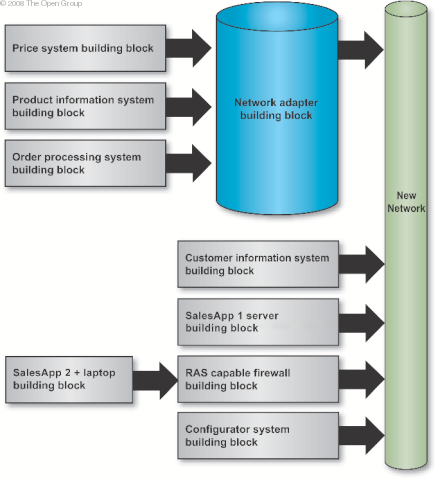
Figure 37-9: Representation of XYZ SalesApp System Representation of XYZ SalesApp System presents a relationship view of the system. Compare this with Augmented Target Architecture of Functions , a functional view, to see how different diagrammatic views of the same system can be used to show different things.
In executing Step 3, the Target Architecture was created by processing the technical functionality that must be provided and:
- Diagrams of larger systems drawn with this notation quickly show what interfaces are needed between building blocks and which ones need to be identical to realize interoperability benefits.
- Representation of XYZ SalesApp System clearly shows where and how glue software is required to bind the legacy systems to the new network.
Step 4 is to select the services portfolio required per building block. Services Map depicts the services mapped to components in the architecture model.
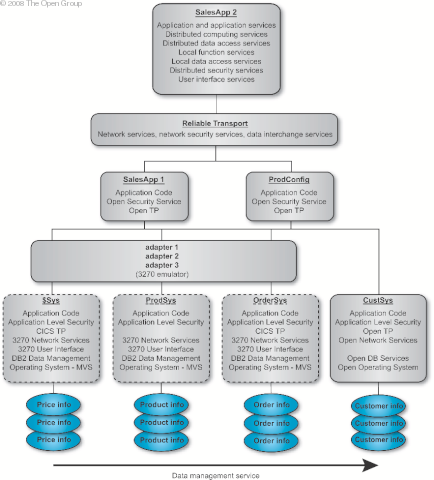
Figure 37-10: Services Map Step 5 in the process is to confirm that the architecture supports the business goals and objectives. This is a relatively subjective task of answering the questions developed in Step 1. In this example, we did not establish a set of questions that would be used to test the architecture, but such questions (and how to pose them in light of the architecture) could easily be envisioned. For example, one question could be: "Does the architecture prohibit the immediate processing of an order by a customer?" which would be answered "no" in our case above.
The use-cases developed earlier are a handy tool to test the completeness and applicability of the architecture and its building blocks.
Building block specifications should be recorded in detail. An example of a building block specification document is given in 37.4.6.1 Customer Information System Building Block Specification .
Where an enterprise architecture exists or is being developed, it may be valuable at this point to review the new set of building blocks. Anything of benefit to the wider enterprise should be abstracted back to an architectural level and then fed back into the enterprise architecture development process.
Step 8 is to conduct a gap analysis, and is not covered in this example.
37.4.6.1 Customer Information System Building Block Specification
Description
This system is put in place of the existing paper-based customer information system to support the goal of improving the speed and quality of order closure. It shields the database from the complexity of the many applications looking at it, but it contains an architectural break-point which could be used later on to make the database itself accessible to other applications.
The interfaces selected must go through an internal approval process modeled on the interface adoption criteria of The Open Group. This means that all specifications must be or become part of the corporate Standards Information Base (SIB).
Functionality
Interfaces (APIs,
Category
Functionality
Formats, & Protocols)
Product or Project
CIF Application Code
Respects metadata repository spec
User-defined
User-defined
Implements business rules
User-defined
User-defined
Has remote access by SalesApp and configurator
DCE RPC
See SIB
Uses SQL
ANSI SQL
CLI
Uses UNIX
UNIX 03
Open DB Services
Relational
Codd
Supports concurrent access
Codd
Offers SQL
ANSI SQL
Open Security Services
Single sign-on
Authorization
DCE
Authentication
DCE
Integrity
Audit
DCE
Non-repudiation
Open Operating System
UNIX
UNIX 03
Network Services
Existing internal network
User-defined
User-defined
Open TP
Multiple concurrent access
The Open Group XA
Load leveling
+Performance
50 enquiries per second
+Manageability
Online software update
Service-level data provision
DMTF Spec
Integration into enterprise management system
TBD
+Availability
24 by 7 by 52
Mandated Building Blocks
Building
Required
Named Used
Block Name
Owner
Functionality
Interfaces
Enterprise Management System
Corporate IT
Service-level data handling
Integration - TBD
Enterprise Network
Corporate IT
CIF System
Marketing
Map to Business Organization Entities and Policies
Policy
Entity
Comments
Security
Corporate admin
Audit
Corporate admin
Development and deployment
Corporate IT
Metadata definition
Corporate IT
Data quality
Corporate IT
IT architecture
Corporate IT
Corporate SIB
Corporate IT
This is linked to The Open Group SIB.
37.4.7 Opportunity Identification
This is the step where projects are identified, ranked, and selected.
The steps illustrated above have laid the foundation for this analysis. Augmented Target Architecture of Functions , for instance, shows the SalesApp applications, the reliable transport, the adapters, and the new customer information system as potential projects.
37.4.8 Building Block Re-Use Level
In ADM Phases F to G, the choice of building blocks may be affected by outside events, such as a change in the availability of products. They can also affect and be affected by issues such as the cost of retraining users during migration from one product to another. Perhaps the most important impact though is the effect that building block choice can have on other work in progress within an organization. This section shows how a diagrammatic representation of the building blocks in a system can be used to identify or prioritize future projects.
An important benefit of defining the building blocks and their linkages is that it becomes possible to pick out re-usable components in the architecture. The best way to do this is to draw up a matrix of the building blocks used in an architecture and the applications that use them. Such a matrix for a simple subset of the XYZ case is shown in Simple Component/Application Matrix .
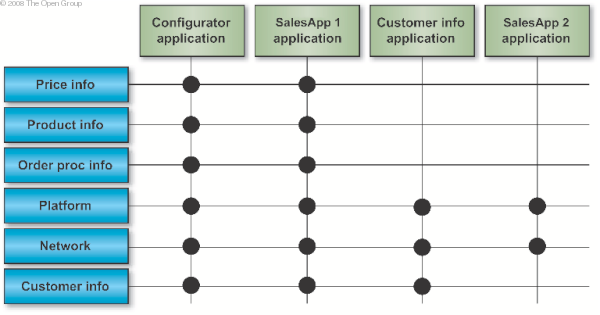
Figure 37-11: Simple Component/Application Matrix Careful ordering of the building blocks in the left-hand column allows the architect to identify subsets of functionality common to a number of applications. Identifying Common Functionality shows such a subset. In this case, the subset of platform, network, and customer information database gives a strong indication that the configurator, SalesApp1, and customer information applications should be hosted on the same platform.
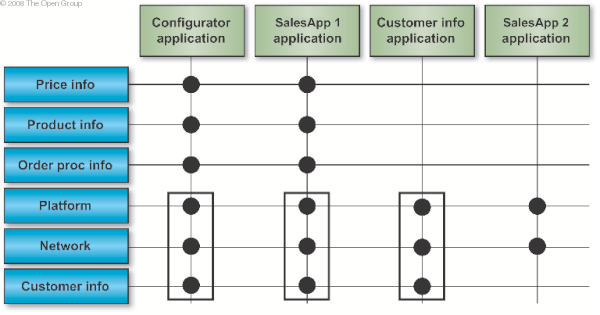
Figure 37-12: Identifying Common Functionality Such identifiable subsets of building blocks also serve another purpose, which is that they can draw attention to opportunities for component re-use. If, in the future, XYZ decides to implement a customer care system, adding that into the matrix reveals that there would be significant advantages to building the customer care system on the same building blocks used for the configurator, SalesApp1, and customer information applications.
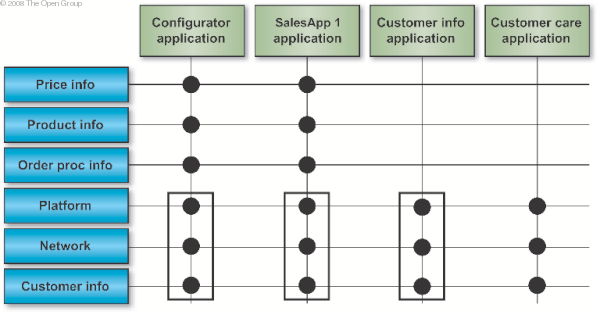
Figure 37-13: Using the Matrix to Steer Future Procurement The key to success in working with building blocks is to establish a useful level of granularity. Too much detail in the chosen set of building blocks will make the architecture unworkable, while too coarse a level of detail will make the work valueless.
Footnotes